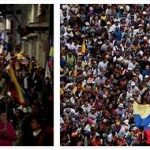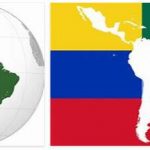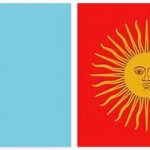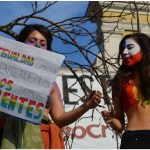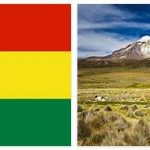6: Mexico – and Venezuela
But Latin America is not yet all blue. According to COMMIT4FITNESS, the biggest and most important exception to the right-wing wave is Mexico. On December 1, 2018, Andrés Manuel López Obrador, popularly called AMLO, was installed as the country’s president. He represents the left-wing party Morena, and won a clear victory in the presidential election five months earlier. This is a bit of a paradox, since Mexico was not part of the great left wave in Latin America. Mexico is the region’s second largest country in terms of population, and it is an important signal that Mexicans are heading towards the main political current in this part of the world.
Poverty, corruption and crime are important reasons why AMLO was elected president. But the new red president has clear populist features, and many are worried that he will use undemocratic methods to strengthen his power and get through his policies.
Another major country in Latin America that still has a left-wing government is Venezuela. But the country today is first and foremost a tragic example of what misrule and corruption can lead to . Nicolas Maduro, who succeeded Hugo Chávez as president, has led the country into an economic and social crisis, with an acute shortage of food, medicine and consumer goods, and over two million people have fled to Colombia and other neighboring countries in recent years.
7: Who wins – who loses?
Latin America has the largest social and economic disparities in the world. The richest 1 percent in Brazil have 36 times as much income as the poorest half of the population.
And what we have seen in recent years is that poverty and unemployment are increasing and that investment in social projects is being scaled down. In Brazil alone, several million people are now back in the ranks of the poor after the great social progress a little over a decade ago.
Traditionally, right-wing governments in Latin America have supported the rich upper class and paid little attention to the plight of the poor. On the other hand, the Conservatives have largely succeeded better in creating economic growth. One of the big questions now is whether the new right-wing governments will be more concerned with social justice than their predecessors. Experiences so far have been mixed, and the signals from Brazil’s new president are not uplifting.
The clear winners of the right-wing wave so far are the business community and the rich middle class. But if the new leaders succeed in creating sustainable economies and in fighting corruption and crime, this will obviously benefit the whole of society.
An important issue in Brazil and several other countries is the clear signals that agriculture and other business interests will now be prioritized at the expense of environmental and climate interests, and many are worried that the world’s largest rainforest, the Amazon, will be exposed to serious damage.
Another result of the right-wing wave is that traditional family values are increasingly in focus throughout Latin America. The evangelical free churches are growing strongly, and the vast majority of them are strong supporters of the right. This means that liberal struggles such as free abortion, equality and the rights of sexual minorities are under strong pressure in country after country. This is especially true in Brazil, where Jair Bolsonaro’s highly derogatory statements about homosexuals have created fear, and where violence against sexual minorities is widespread and increasing.
8: What will happen in Latin America?
After Donald Trump’s election victory in the USA in 2016 and the right – wing populists’ progress in Europe in 2017, the trip now seems to have come to Latin America. In country after country, the cry for “the strong man” is heard, and belief in democracy is declining.
The Latin American region with its 550 million inhabitants is at a crossroads, and the outlook is more uncertain than in a long time. Will they remain blue or will the pendulum swing back again?
These countries are part of Latin America:
- Argentina
- Bolivia
- Brazil
- Chile
- Colombia
- Costa Rica
- Cuba
- The Dominican Republic
- Ecuador
- El Salvador
- French Guiana
- Guadeloupe
- Guatemala
- Haiti
- Honduras
- Martinique
- Mexico
- Nicaragua
- Panama
- Paraguay
- Peru
- Puerto Rico
- Uruguay
- Venezuela

